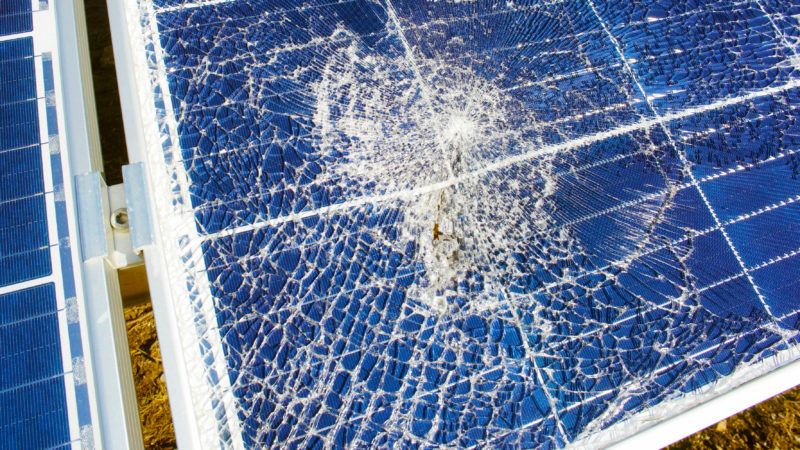California Blackouts: It's Not Just the Heat, It's Also the Anti-Nuclear Power Stupidity
Activists oppose a huge source of reliable, climate-friendly electricity that could have prevented the rolling blackouts in the Golden State.

Rolling electric power blackouts afflicted as many as 2 million California residents last week as a heat wave gripped the Golden State. (It's apparently eased up for now.) At the center of the problem is that power demand peaks as overheated people turn up their air conditioning in the late afternoon just as solar power supplies cut off as the sun goes down. In addition, output from California's wind farms was erratic. Currently, about 33 percent of California's electricity comes from renewable sources as mandated by state law. Until this summer, California utilities and grid operators were able to purchase extra electricity from other states, but the current heat wave stretches from Texas to Oregon so there was little to none available to make up for California's power shortage.
According to the San Jose Mercury News, California electricity grid operators had warned in September 2019 that power shortages might become increasingly common when heat waves hit over the coming years. The current situation was thankfully not worse since California still has some natural gas power plants in operation that can be ramped up to supply energy when renewable supplies fail.
"Some folks in the environmental community want to shut down all the gas plants. That would be a disaster," said Jan Smutny-Jones, CEO of the Independent Energy Producers Association, a trade association representing solar, wind, geothemal, and gas power plants, to the Mercury News. "Last night [Sunday] 60 percent of the power in the ISO [Independent System Operator] was being produced by those gas plants. They are your insurance policy to get through heat waves."
Reuters reported that California's grid operators estimated that peak electricity consumption earlier this week might exceed available supply statewide by as much as 4,400 megawatts—roughly equivalent to the amount needed to power 3.3 million homes.
In a particularly obtuse report on NPR's Morning Edition today, Union of Concerned Scientists energy analyst Mark Specht asserted, "the solution is definitely not more natural gas plants. Really if anything this is an indication that California should speed up its investments in clean energy and energy storage."
NPR reporter Lauren Sommer followed up by observing, "After all, he [Specht] said climate change is making heat waves worse, so burning more fossil fuels to deal with that is somewhat counterproductive."
Completely ignored in the reporting is that California has been shutting down a huge source of safe, reliable, always-on, non-carbon dioxide–emitting, climate-friendly electricity—that is, nuclear power. In 2013, state regulators forced the closing of the San Onofre nuclear power plant that supplied electricity to 1.4 million households. By 2025, California regulators plan to close down the Diablo Canyon nuclear power plant that can supply electricity to 3 million households.
The problem of climate change, along with the blackouts resulting from the inherent vagaries of wind and solar power, are an indication that California should not only keep its nuclear power plants running but also build many more of them.


Show Comments (195)